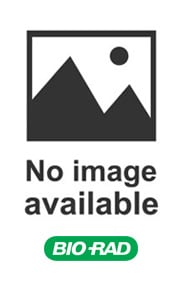C4c antibody | 033D-69.4.1 (10-12)

Mouse anti Human C4c
- Product Type
- Monoclonal Antibody
- Clone
- 033D-69.4.1 (10-12)
- Isotype
- IgG1
- Specificity
- C4c
| Mouse anti Human C4c antibody, clone 033D-69.4.1 (10-12) recognizes complement component 4c (C4c). The complement 1 complex cleaves complement 4 (C4) to form C4b and C4a. C4b levels are strictly regulated. Single site cleavage of the C4b’s alpha chain by Factor I forms iC4b and blocks C3 convertase, inhibiting opsonisation and activation of the classical pathway. iC4b is further degraded into the inactive fragments C4d and C4c. C4c consists of two a-chain fragments, alpha 4 (13 kDa) and alpha 3 (25 kDa) linked to a beta chain through disulphide bridges and a gamma chain. It is expressed in the blood plasma. |
- Target Species
- Human
- Product Form
- Purified IgG - liquid
- Preparation
- Purified IgG prepared by affinity chromatography on Protein A from ascites
- Buffer Solution
- Borate buffered saline
- Preservative Stabilisers
- <0.1% Sodium Azide (NaN3)
- Immunogen
- Purified human C4c.
- Approx. Protein Concentrations
- Current, batch-specific concentration 1.15 mg/ml
- Regulatory
- For research purposes only
- Guarantee
- Guaranteed until date of expiry. Please see product label.
Avoid repeated freezing and thawing as this may denature the antibody. Storage in frost-free freezers is not recommended.
| Application Name | Verified | Min Dilution | Max Dilution |
|---|---|---|---|
| ELISA 1 | |||
| Flow Cytometry | |||
| Immunohistology - Frozen | |||
| Western Blotting |
- 1Clone 10-12 binds both C4c and C4 and so is not suitable for all ELISA applications.
- Histology Positive Control Tissue
- Kidney sections from post-streptococcal glomerulonephritis patients.
| Description | Product Code | Applications | Pack Size | List Price | Your Price | Quantity | |
|---|---|---|---|---|---|---|---|
| Mouse IgG1 Negative Control | MCA928 | F | 100 Tests |
|
Log in | ||
| List Price | Your Price | ||||||
|
|
Log in | ||||||
| Description | Mouse IgG1 Negative Control | ||||||
Further Reading
-
Press, E.M. & Gagnon, J. (1981) Human complement component C4. Structural studies on the fragments derived from C4b by cleavage with C3b inactivator.
Biochem J. 199 (2): 351-7. -
Leung, E. et al. (2006) The complement regulator C4b-binding protein (C4BP) interacts with both the C4c and C4dg subfragments of the parent C4b ligand: evidence for synergy in C4BP subsite binding.
Biochemistry. 45 (27): 8378-92.
Please Note: All Products are "FOR RESEARCH PURPOSES ONLY"
View all Anti-Human ProductsAlways be the first to know.
When we launch new products and resources to help you achieve more in the lab.
Yes, sign me up